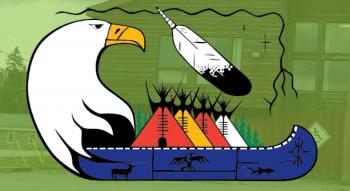Image Caption
Summary
Local Journalism Initiative Reporter
Windspeaker.com
A First Nation is taking the Ontario government and gold explorers to court to prevent mining activity on 260 square kilometres of the Nation’s territory.
On Tuesday, Ginoogaming First Nation went to the Ontario Superior Court seeking an injunction against mining activities until the Nation can argue its full legal rights.
At stake is a sacred area of land in Ginoogaming territories known as Wiisinin Zaahgi’igan, which roughly translates to English as “the place where you get food.” But the Nation says it is much more than that.
“It is a cultural keystone area that’s described by First Nation members as their heart and soul,” said Kate Kempton, a lawyer for the Nation, in a phone interview. “They exercise their rights, worship and commune with the land and the Creator there.
“This is not a case where it’s ok to do some things in various spots as long as you leave a bit of a buffer around places that can’t be touched; the entire area, if interfered with by industrial activity, would be broken apart and break the First Nation.”
The Anishnawbe community, located roughly three-hours northeast of Thunder Bay, argues its underlying, inherent rights on its territories are at risk. With mineral prospectors at the doorstep now, it wants a temporary halt to their permits until the Nation’s case can be heard fully, Kempton said.
Michael Malouf, owner of Quaternary Mining and Exploration Company and Hardrock Extension, is one of the two businessmen named in the injunction application. He has invested in prospecting in the area for 35 years, he said, and received valid provincial permits.
He represented himself in court on Tuesday by videoconference, and said the band “have not produced any evidence” that the Wiisinin Zaahgi’igan area is sacred, saying he never even heard about the area from the band until last year.
“They switched over from holding up the consultation to the rhetoric of ‘Now it’s a sacred area that’s gotta be protected’,” Malouf told the court. “Nobody ever said anything to me. I don’t know if they ever said anything to the government.
“They owed us a duty over 35 years to tell us ‘This is a sacred area, you’re not wanted in here’.”
Malouf said he has invested today’s equivalent of $12 million into his projects there, ever since he first struck gold in 1982. That’s the same year as Canada’s Constitution became law, including its protections for “existing aboriginal and treaty rights of the aboriginal peoples.”
The First Nation filed its larger case, arguing their rights were violated through inadequate consultations, last November.
“We’re seeking to stop the way the regulations under the Mining Act have been used to issue these permits,” Kempton said. “The Crown shouldn’t have issued the permits.”
On Tuesday, Ontario Crown lawyer Kisha Chaterjee said the permits for Malouf’s Ferau Project permit issued to Malouf were for “early exploration activities on certain terms and conditions,” and that First Nations “duty to consult” were required and met.
“On four separate occasions before the Ferau permit was approved, Ginoogaming received correspondence ... providing the community with the opportunity to raise concerns about the proposed activity,” Chaterjee argued. “In each communication, Ontario demonstrated a willingness to receive concerns regarding the Ferau permit, but there was no response.”
The broader case could chart new legal ground, according to lawyers, because the arguments rely on the sacredness of a particular area of their territories, not on the more typical hunting, fishing and harvesting rights argued in previous landmark court battles and enshrined in the Constitution and treaties.
“We are trying to have our sacred and ancestral identity respected as a right,” explained Sheri Taylor, Ginoogaming First Nation’s vice chief, in a statement. “Our rights cannot be reduced to only harvesting … Nowhere else are people defined merely by their economies, and we should not be either. We live by the laws of the Creator.”
If successful, Kempton told Windspeaker.com, it could set a legal precedent for other First Nations to argue their rights to sacred areas and activities. She said what is unique is that Ginoogaming are “not seeking to prove title” to the lands, but inherent rights.
According to the lawsuit filed last year, mining in Wiisinin Zaahgi’igan would “irreparably harm” the “identity, cultural survival and psychosocial wellbeing of the people of Ginoogaming and the Nation as a whole.”
Ginoogaming First Nation has nearly 1,000 members, one-in-five of them living on-reserve. It is a signatory to James Bay Treaty 9.
In a 2016 presentation to a nearby municipality, Malouf claimed that his three similarly-sized mining plots in the local area — including the Ferau project now subject to the Ginoogaming lawsuit — could hold nearly 60 million ounces of gold, worth at least $95 billion at the time. Windspeaker.com could not independently verify the statement.
“Most of the infrastructure required to support major mining operations … is already in place," Malouf said at the time, listing the Trans Canada Highway, the CN railway, and an airport.
"Furthermore, the First Nations and the Métis are pro development."
Local Journalism Initiative Reporters are supported by a financial contribution made by the Government of Canada.

